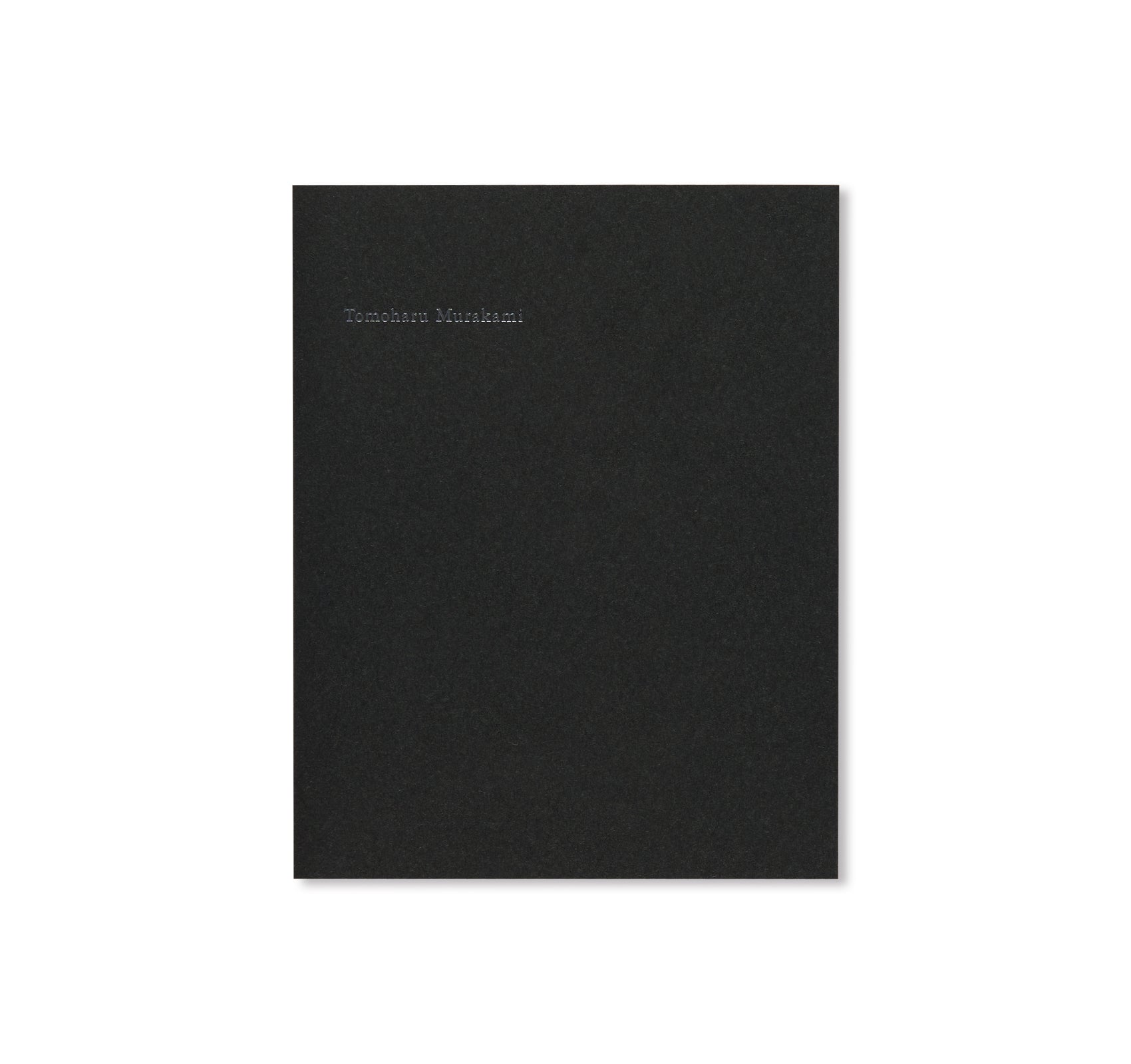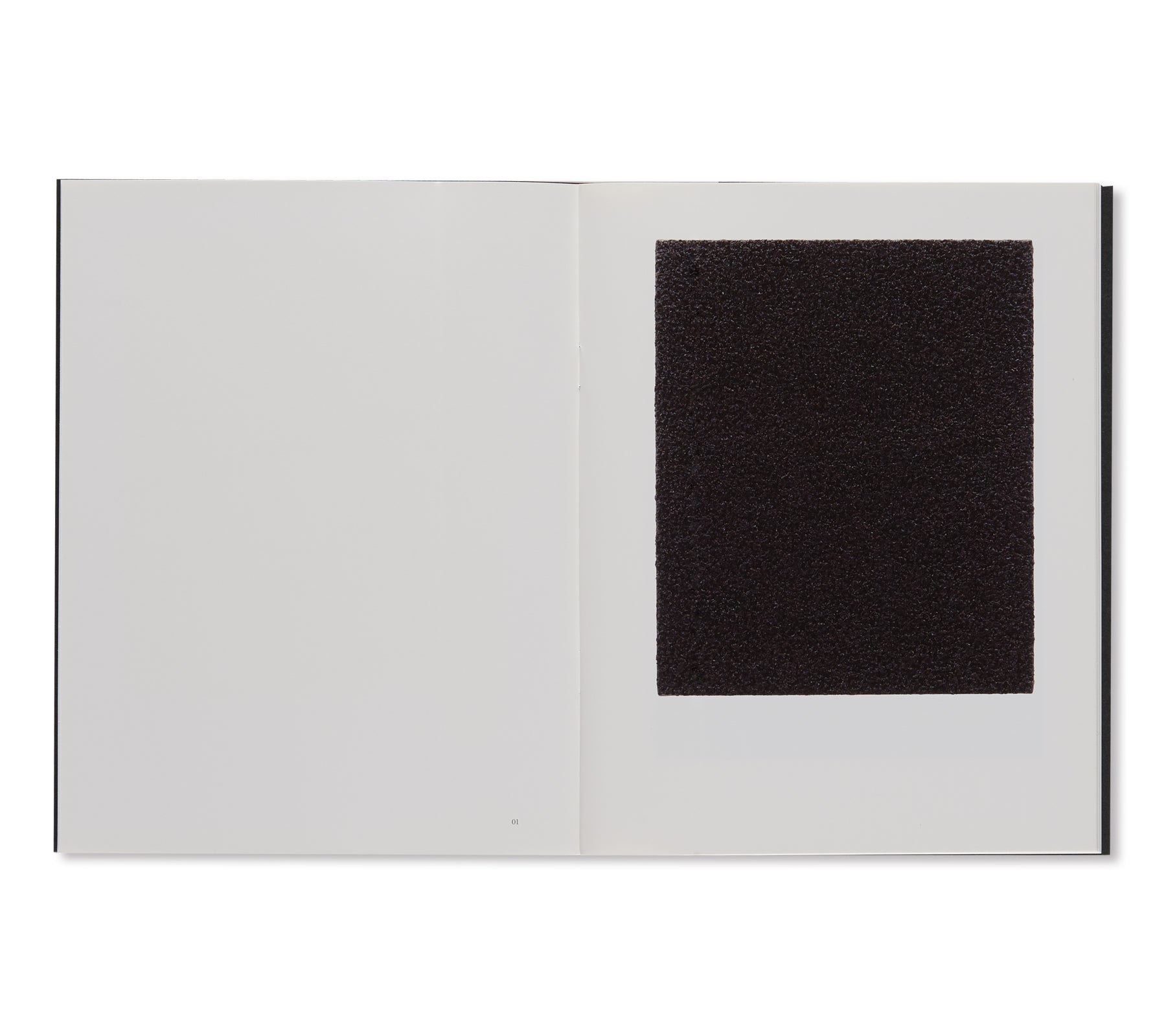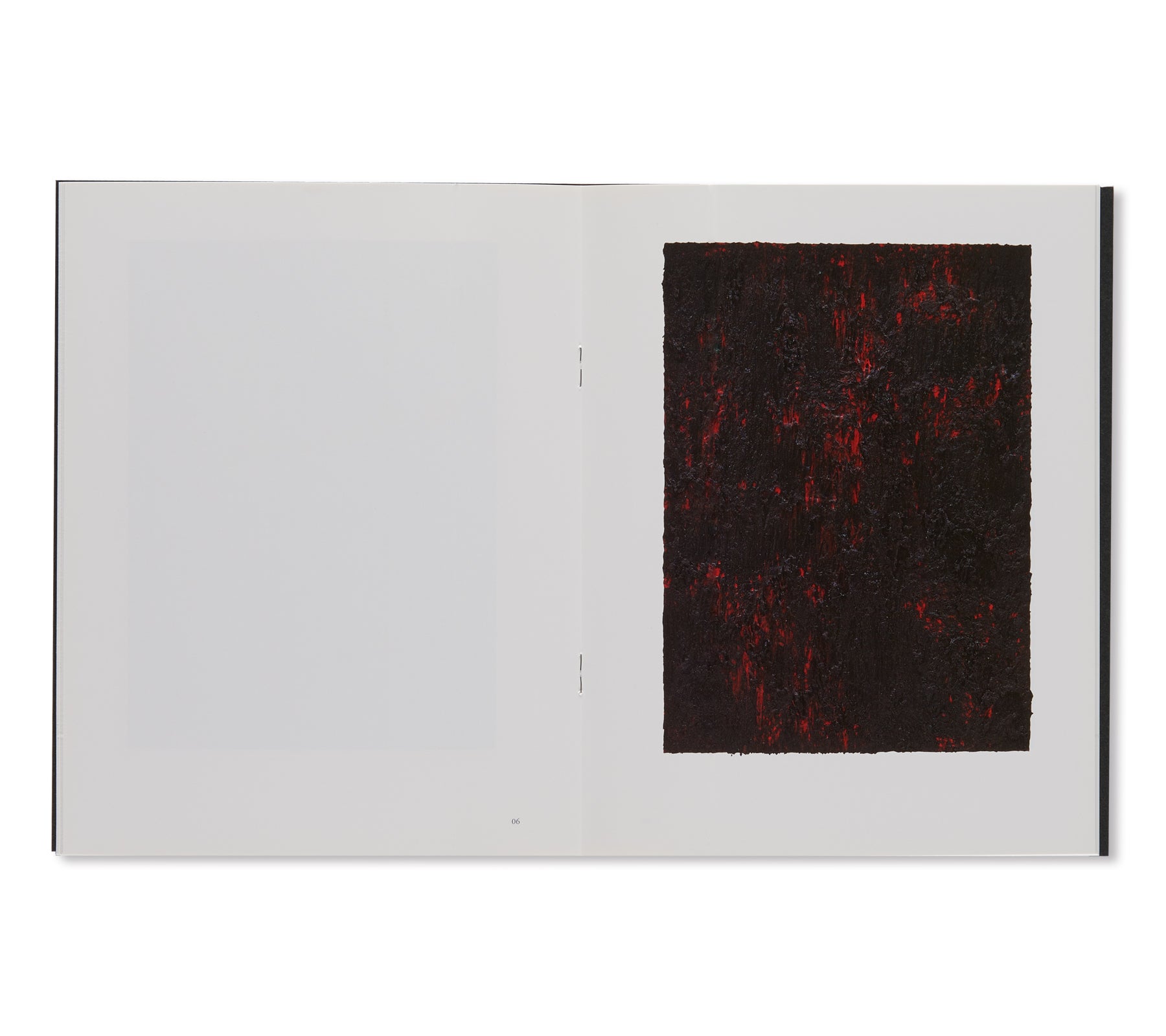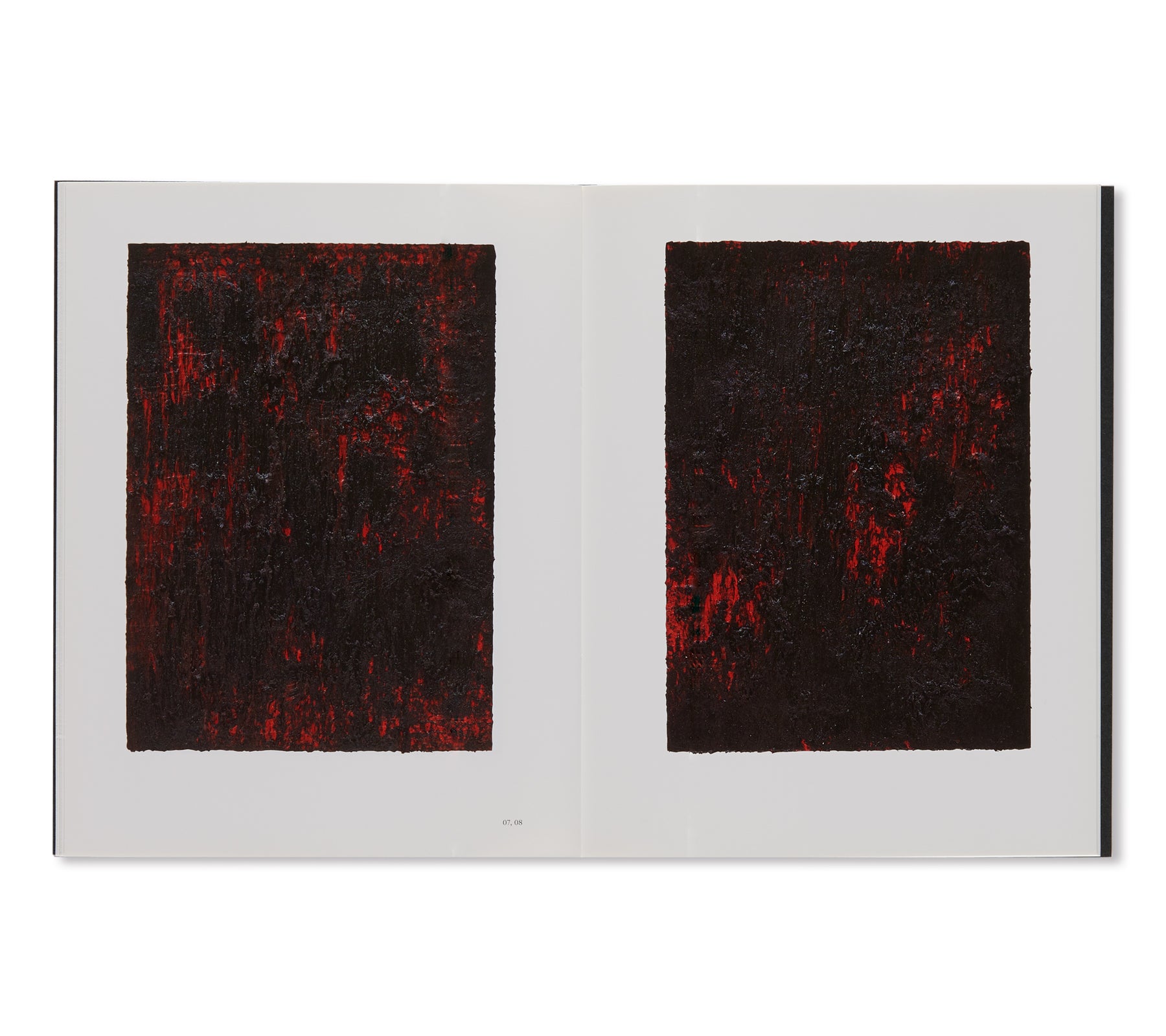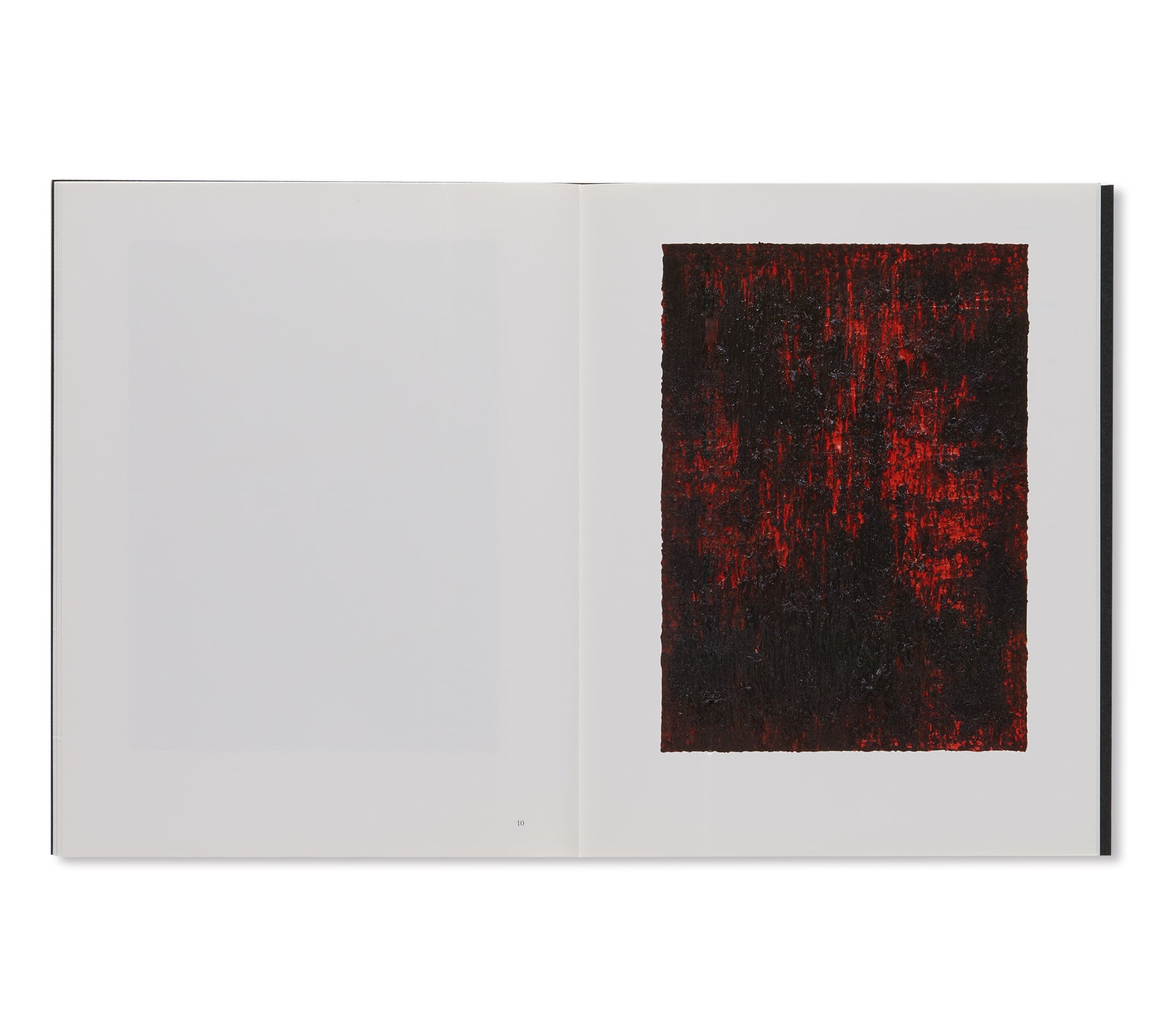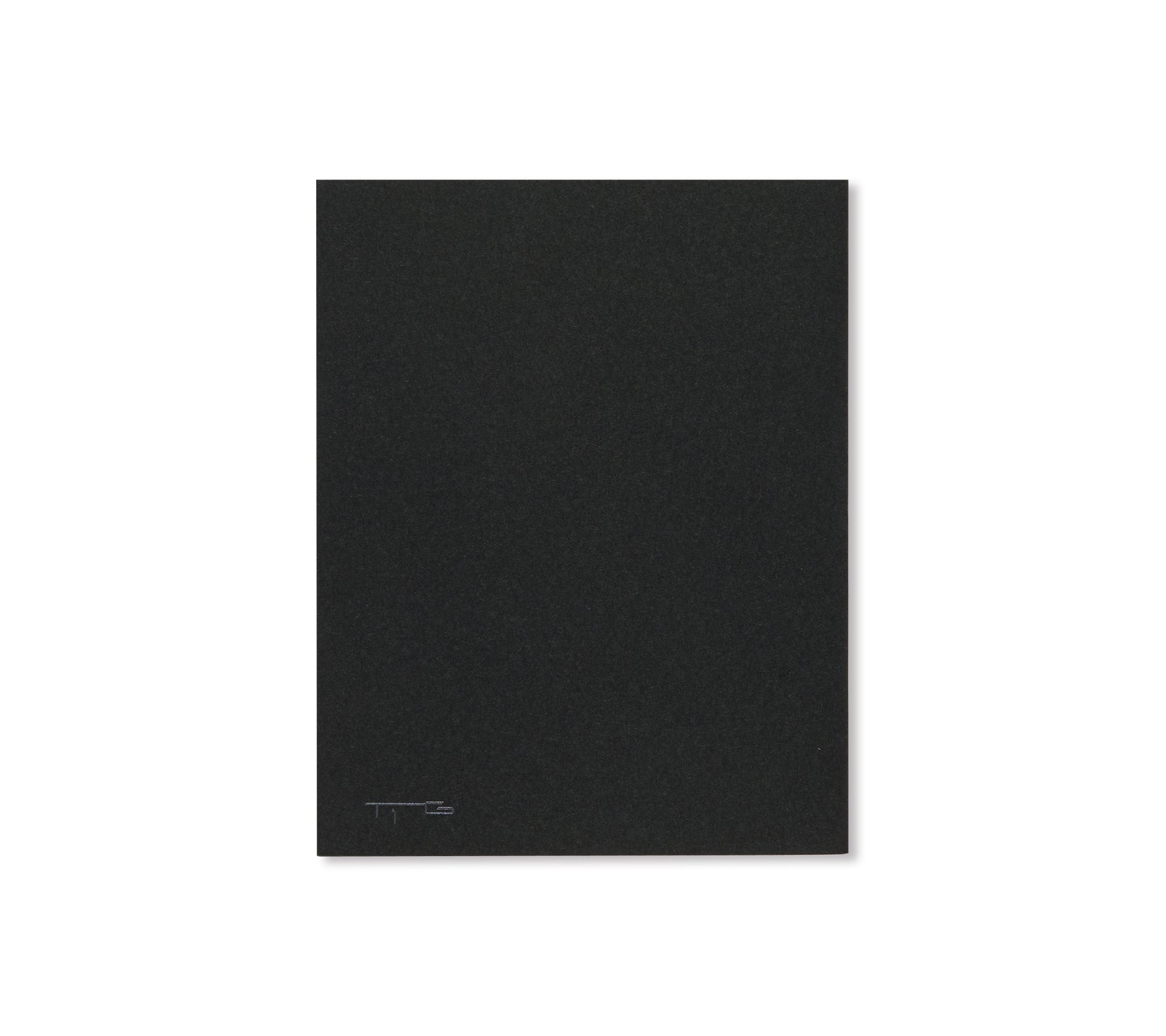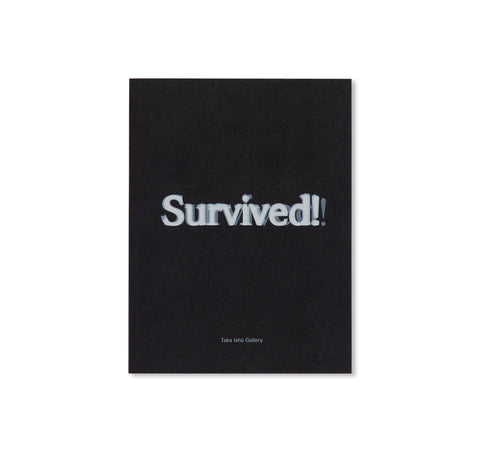TOMOHARU MURAKAMI by Tomoharu Murakami
日本人作家、村上友晴の作品集。2016年にタカ・イシイギャラリーニューヨークで開催された個展に伴い刊行された。美術評論家の市川政憲によるテキストを収録。(英語、日本語)
以下プレスリリースより抜粋
本展では、1960年代初めに日本画家として活動を始め、その後10年余りの長い空白期を経て、再び現代美術家として再出発した村上の1990年代の絵画から10点を展示いたします。終戦直後の東京の国立博物館の裏庭や展示室を子供時代の遊び場にしていた村上は、長谷川等伯の作品に惹かれ、水墨画を学ぼうと東京藝術大学の日本画科に入学しました。ところが、岩絵具を駆使して制作する当時の日本画の新しい表現方法に馴染むことができず、しだいに日本顔料と油絵具を混合した絵具を素材とした黒一色の抽象表現へと傾倒していきました。転換の決定的なきっかけとなったのは、1964年に開催されたグッゲンハイム国際賞展へ招待参加時にアメリカ抽象表現主義の画家たちの絵画の巨大さと堅牢さを目にしたことでした。これに衝撃を受けた村上は、日本画の技法を捨て、大きなキャンバスに黒色の下地を塗って、その上に黒色の絵具を塗り重ね、少しずつ盛り上げて厚い表面を作っていく新しい手法に転換し、自己の理想とする黒色の絵を完成させることに傾注していきました。村上の絵画作品は多くの場合、漆黒や赤色を中心とした色彩で画面全体が覆い尽くされた構成です。キャンバスの作品には木炭の粉末を混ぜて油分を減らした油絵具をナイフでキャンバスに塗り込んでいく手法が用いられています。一方、紙の作品では、本来親和性に乏しいアクリル絵具と油性の絵具が併用され、アクリル絵具は絵筆で、油絵具はナイフで塗ることで、それぞれに重ねられた絵具の微妙な相違が画面に奥行きを与えています。いずれも、時には一点の作品に数年の歳月をかけて制作されることがあります。1979年にカトリック教会の信徒となった村上は、修道院の生活に倣って、深夜に起床し、日の出まで絵画を制作すると、教会へ朝の祈りに行き、食事と昼寝を挟んで夕べの祈りまで制作を続けて就寝する生活を送っています。こうした村上の長い時間をかけた手仕事の積み重ねによって完成する作品においては、自己表現を核心とした近代美術は完全に変容しており、そこに現れてくるものは、神への祈りにも比せられる無私の行為によって触れる「永遠」であり「無心」であり、人間が生涯をかけて到達しようとする崇高な精神性への過程が刻まれているといえるでしょう。
朝、昼、晩、人間の心のうさ。知覚に獲えることはできないが、確かに在るもの。このような存在を平面のカンヴァスに定着させることが可能か。余分な計らいを捨て、まったく単純に「自然」になりきったその時、逆にすべてを含んだ、深いそのものが現れてくるのではないか。長い時をかけ、毎日の絵具を塗る行為を通して、そのものに触れられることを望んでいる。
-村上友晴『美術手帖』1982年2月号
Text by Masanori Ichikawa (English and Japanese)
Official Press Release:
Taka Ishii Gallery New York is pleased to present a solo exhibition of works by Tomoharu Murakami. Starting his career as a Nihonga (Japanese painting) painter in the early 1960s, Murakami stopped making work for over 10 years before relaunching his practice as a contemporary artist. This exhibition will feature 10 works made by Murakami in the 1990s. Murakami, who had used the backyard and exhibition rooms of the Tokyo National Museum as his playground as a child in the immediate postwar period, was drawn to Tohaku Hasegawa’s works and entered the Japanese Painting Course at the Tokyo National University of Fine Arts to study ink painting. He was, however, unable to adapt to the then new method in Japanese painting of using mineral pigments. As a result, he increasingly devoted himself to making abstract expressionistic pictures made solely in black paint made of a mixture of Japanese pigments and oil paints. The decisive moment of this transformation occurred when he was invited to participate in and witnessed the enormous scale and solidity of the American abstract expressionist paintings included in the Guggenheim International Award Exhibition held in New York in 1964. Shocked by these works, Murakami abandoned Japanese painting techniques and began employing a new method in which he painted the canvas with a black undercoat and layered more black paint on top of it to gradually build a thick surface. After this shift, he concentrated on completing black paintings that satisfied his ideal. Many of Murakami’s paintings are covered all over with a color palette primarily constituted by jet blacks and reds. His works on canvas are made by mixing charcoal powder into the paint to absorb the oil and using a knife to work the paint onto the support. On the other hand, his works on paper are made with a combination of acrylic and oil paints, which are normally thought to be incompatible. He applies the acrylic paint with a pencil and oil paint with a knife to create finely distinguished layers of paint that give depth to the picture plane. Murakami produces both canvas and paper works over a long period, sometimes taking years to create a single work. Since converting to Catholicism in 1979, Murakami has fashioned his life after that lead in a monastery, waking up late at night, painting till dawn, and going to a church in the morning to pray, and working between meals and a nap until he sleeps. These labor intensive works made over long durations of time are drastically different from modern art based on self-expression. They are instead products of a self-less acts akin to prayer that approach “eternity” and “unselfconsciousness.” These works are marked with a process in which man devotes his life to the attainment of a sublime spirit.
Morning, noon, night, and despondence: these things that definitely exist cannot be captured with one’s perceptions. Is it possible to fix such existences on a two-dimensional canvas? It might be that when I dispose of unnecessary intentions, and can just simply be “natural,” then it is possible for me to manifest “the profound” that encompasses everything. I hope to touch that “profundity” over a long passage of time, and through my daily act of applying paint to my paintings.
– Tomoharu Murakami, Bijutsu Techo, February Issue, 1982
